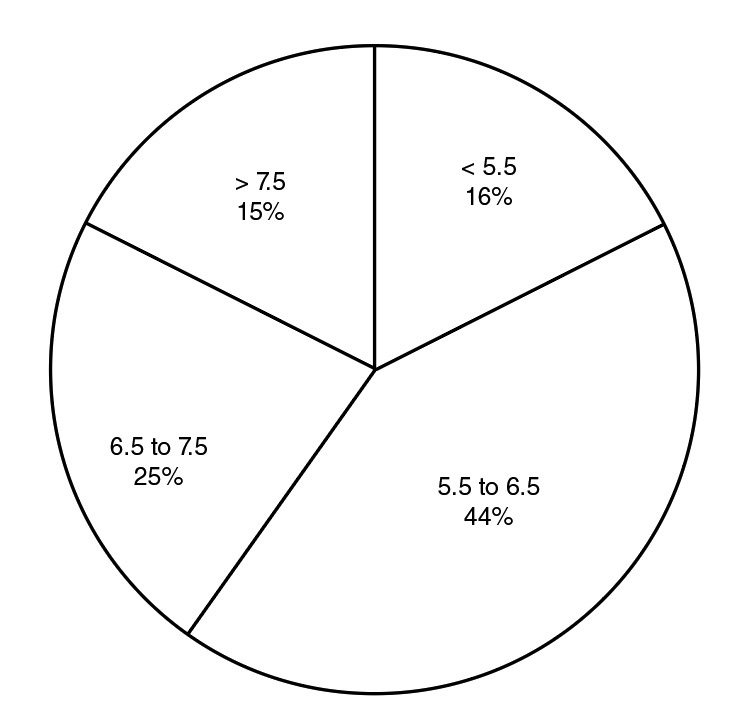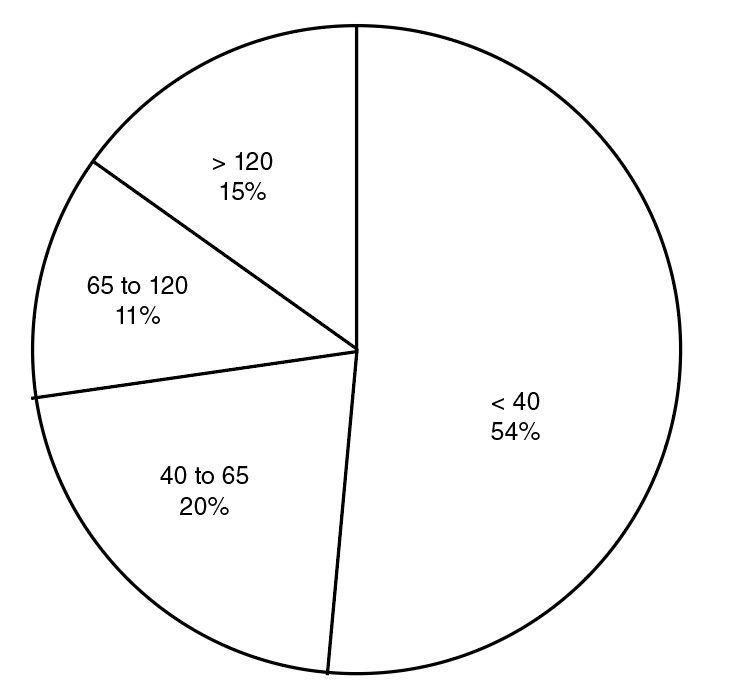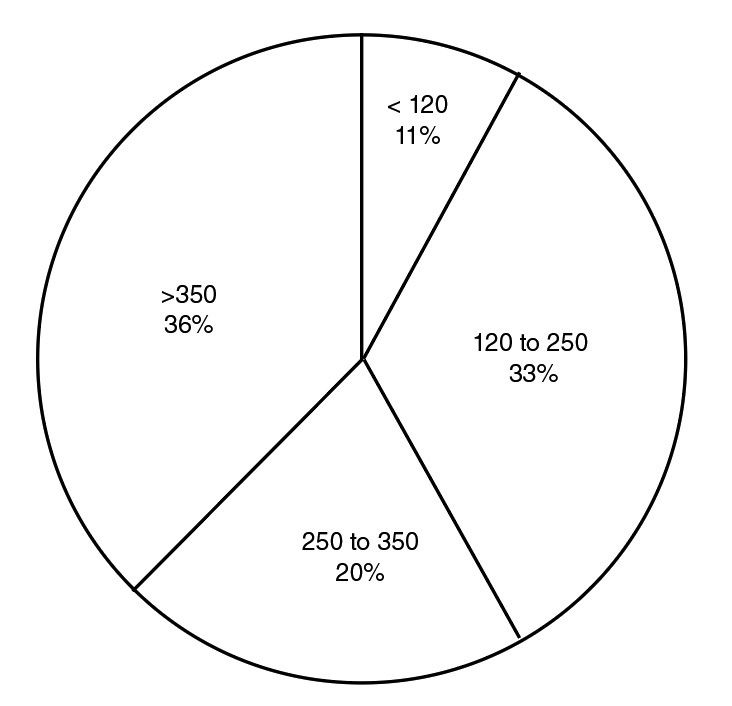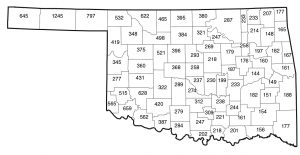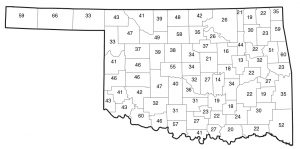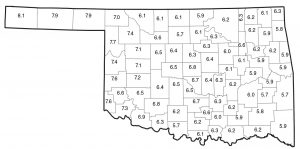Oklahoma Agricultural Soil Test Summary 2014-2017
Soil fertility information for an individual county or a whole state is necessary for estimating nutrient needs, tracking changes in soil pH and nutrient levels and serving as a guideline for fertilizer and manure application. The Oklahoma Cooperative Extension Service’s Soil, Water and Forage Analytical Laboratory (SWFAL) analyzes soil samples and archives testing results for all 77 Oklahoma counties. A statewide and county summary of all agricultural soil samples is made every four to five years. The summary from 2014 to 2017 consists of about 47,200 samples and is presented below in Tables 1 and 2. Similar summaries from 1994 to 1999, 2000 to 2003, 2004 to 2008 and 2009 to 2013 were made and published in CR-2247, CR-2253, CR-2259 and CR-2074, respectively. All of the identifiable lawn, garden and research samples were excluded in the summary, since most of them do not represent the real condition in agricultural fields. Soil samples were analyzed for pH, buffer index (BI) if pH was less than 6.3 for lime recommendations, nitrate-nitrogen (NO3-N, lbs/acre), soil test phosphorus (STP) index and soil test potassium (STK) index. Medians are given along with the average, because most of the data do not have normal distributions and sometimes averages give a false impression on where the center of the distribution lies for non-normal distributions. Some unusually high values were also removed from the database (NO3-N>1,000; STP>1,000 and STK>2,000), because most of those samples were mislabeled compost or manure samples.
This summary may provide a valuable index of the soil fertility status of Oklahoma
farmland, but soil samples still need to be collected and analyzed for an individual
field to better manage soil fertility and to correct soil acidity problems. Similar
summaries for each county are also available. To request a copy for a specific county,
please contact the authors at (405) 744-6630, soiltesting@okstate.edu or hailin.zhang@okstate.edu.
Table 1. Median, average and ranges of test results for all agricultural soil samples tested by SWFAL between 2014 and 2017.
| pH | NO3-N (lbs/a) |
STP Index | STK Index | |
|---|---|---|---|---|
| Median | 6.3 | 10 | 36 | 278 |
| Average | 6.4 | 19 | 66 | 334 |
| Minimum | 3 | 1 | 1 | 19 |
| Maximum | 9.7 | 920 | 999 | 1983 |
Table 2. Distributions of soil pH, NO3-N (lb/ac), Soil Test P Index and Soil Test K Index analyzed from 2014 to 2017.
| Soil pH | <5.5 | 5.5-6.5 | 6.5-7.5 | >7.5 |
|---|---|---|---|---|
| Count | 7,693 | 20,843 | 11,581 | 7,036 |
| Percent | 16.30% | 44.20% | 24.60% | 14.90% |
| NO3-N (lbs/A) | <10 | 20-Oct | 20-40 | >40 |
| Count | 22,120 | 11,759 | 7,893 | 5,350 |
| Percent | 46.90% | 24.90% | 16.80% | 11.40% |
| STP Index | <40 | 40-65 | 65-120 | >120 |
| Count | 25,338 | 9,657 | 5,338 | 6,994 |
| Percent | 53.50% | 20.40% | 11.30% | 14.80% |
| STK Index | <120 | 120-250 | 250-350 | >350 |
| Count | 4,984 | 15,616 | 9,640 | 16,856 |
| Percent | 10.60% | 33.20% | 20.50% | 35.80% |
Soil pH and Lime Requirement
The median pH of Oklahoma soils was 6.3, which is 0.2 higher than that of the previous four years. That means 50 percent of the fields tested had a pH less than 6.3. Soil pH of all samples is divided into four groups and shown in Figure 1. Nearly 16 percent of the 47,200 samples had a pH less than 5.5 and indicated a potential production loss due to soil acidity. Low soil pH has become a crop production problem of increasing concern in many parts of Oklahoma. This is especially true in some counties in the central wheat growing region where as high as 30 percent of the fields had a pH less than 5.5. Strong soil acidity not only lowers the availability of phosphorus, but also increases the level of toxic elements present, such as aluminum and manganese. Banding phosphate fertilizer and using aluminum-tolerant wheat varieties have shown some benefits on acid soils, but eventually lime must be used to neutralize the acidity and to sustain crop production, especially when winter wheat is rotated with other less acid-tolerant crops.
Figure 1. Soil pH distribution of Oklahoma agricultural soil samples tested between 2014 and
2017.
Soil Nitrate-Nitrogen (NO3-N)
The distribution of NO3-N in all the surface soils is shown in Table 2. The majority of the surface soil
samples had less than 20 pounds residual NO3-N per acre (median 10 pounds per acre). Only 11.4 percent of the fields sampled had
NO3-N greater than 40 pounds per acre. This indicates that most farmers would need to
apply N fertilizer for the production of most crops based on surface soil tests alone.
However, subsoil samples (6 to 18 inches deep) could contain significant amounts of
nitrate nitrogen. Deep-rooted crops, such as winter wheat, cotton and bermudagrass
can penetrate and utilize the nitrate nitrogen from the subsoil during growth. Since
very few farmers submitted subsoil samples, subsoil nitrate results were not included
in the summary.
Soil Test P Index
The phosphorus soil test estimates the availability of soil phosphorus during the whole growing season. The Mehlich 3 extraction method for plant-available P and K analysis has been used in Oklahoma since the 1980s. The estimated availability is reported as an index and percent sufficiency in the soil (See fact sheet PSS-2225 for more details). Phosphorus fertilizer needs to be added if the soil test P index is less than 65 (100 percent sufficient level). The available P status is graphed in Figure 2. About 54 percent of the soil samples are considered low in P availability (STP index <40) and 20 percent were in the medium category (STP 40-65). Therefore, those fields need various amounts of commercial P or animal manure to achieve the potential crop yields. Eleven percent of the samples had a STP index between 65 and 120. In this range, some crops may benefit from additional P fertilizer, but it may not be cost effective. About 15 percent of the fields had STP over 120, although some parts of the state had much higher percentages due to repeated application of animal manure. Knowing areas in which P is deficient will assist with manure utilization efforts through which nutrients are redistributed, thereby reducing the impact on water quality.
Figure 2. Distribution of soil test P index in Oklahoma agricultural soils tested between 2014
and 2017.
Soil Test K Index
Most Oklahoma soils are high in potassium. This can probably be attributed to the parent materials and low rainfall conditions under which our soils are developed. Data in Figure 3 confirms this tendency. About 44 percent of the fields had a STK index less than 250, or sufficiency less than 100 percent, for all crops except for alfalfa, which would need additional K to meet crop requirements. The 100 percent sufficiency STK for alfalfa is 350. In general, the STK levels decrease from western to eastern Oklahoma along the precipitation gradient as shown in Figure 4.
Figure 3. Distribution of soil test K index in Oklahoma agricultural soils tested between 2014
and 2017.
Median STK, STP and Soil pH Values by County
The median soil test K and P index, and soil pH are presented on the following Oklahoma County maps (Figures 4, 5 and 6, respectively). In general, soil pH values are neutral to calcareous in the western and southwestern parts of the state, but acidic in the eastern and north central portions. There is no obvious pattern of STP distribution, but STK decreases from the west to east.
Figure 4. Median Soil Test K index values of soil samples tested between 2014 and 2017 for
Oklahoma Counties.
Soil test K index ÷ 2 = mg/kg (ppm)
Figure 5. Median Soil Test P index values of soil samples tested between 2014 and 2017 for
Oklahoma Counties.
Soil test P index ÷ 2 = mg/kg (ppm)
Figure 6. Median Soil pH values of soil samples tested between 2014 and 2017 for Oklahoma Counties.

